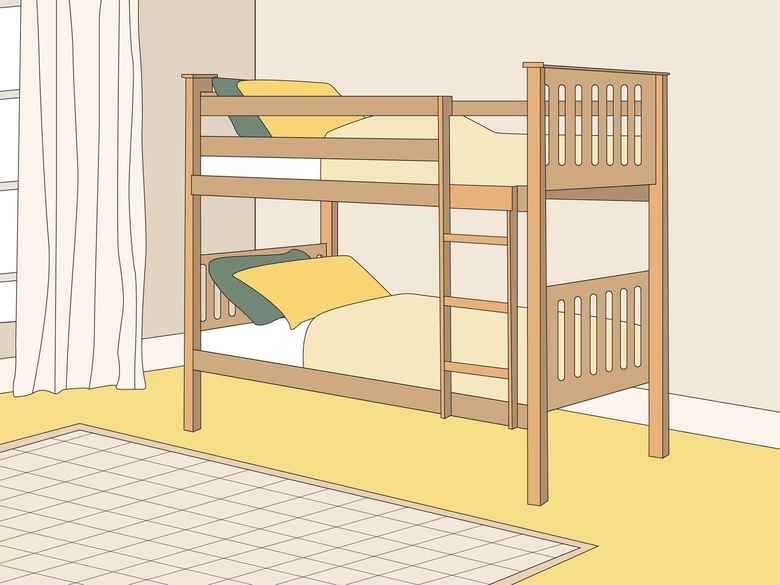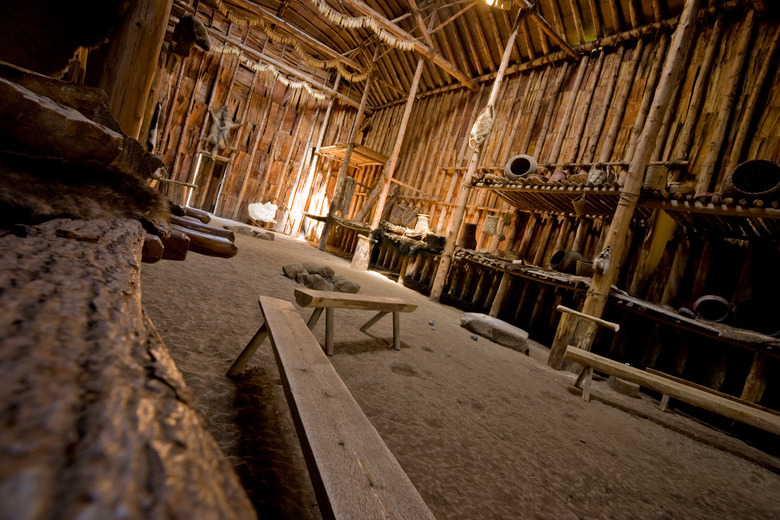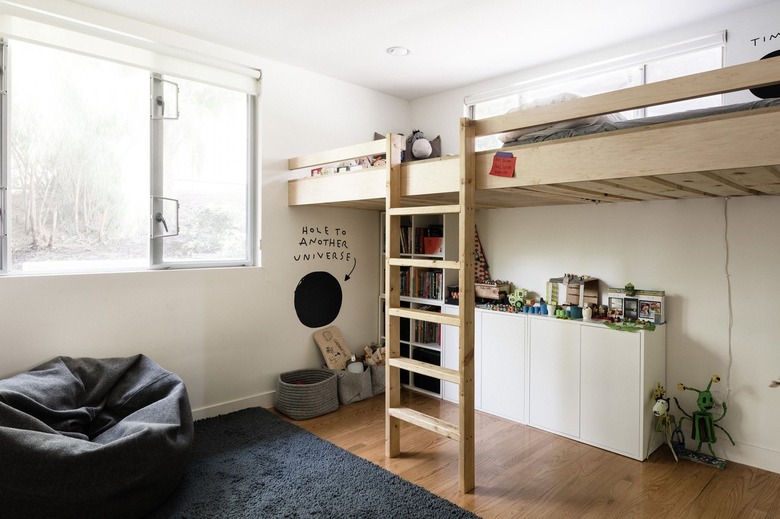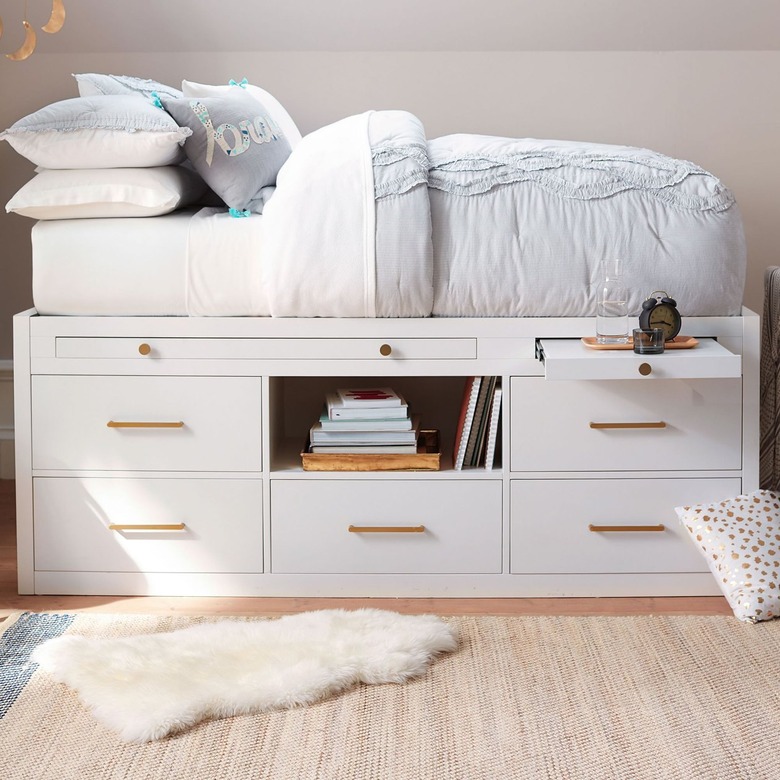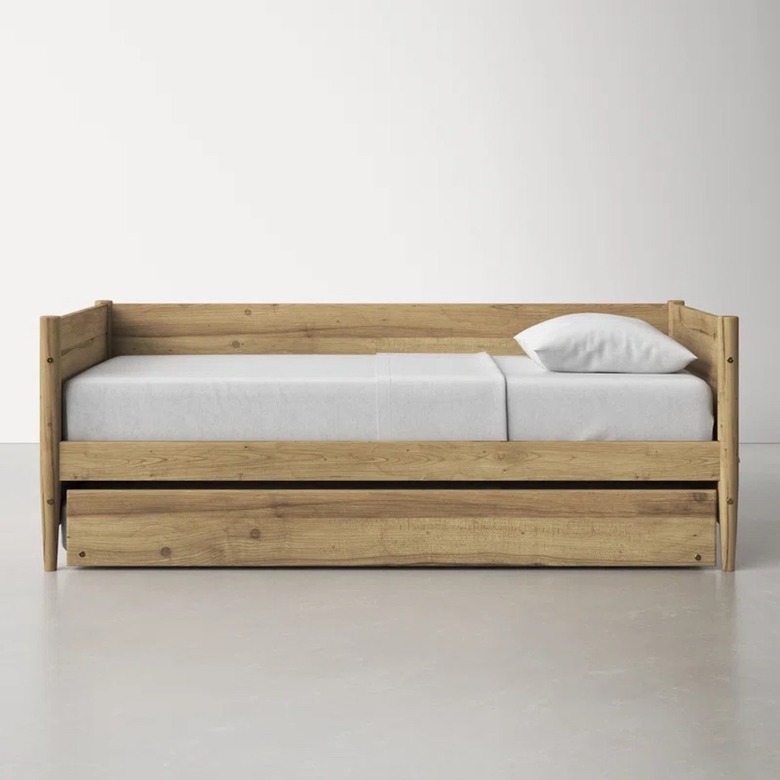The Iroquois Invented The Bunk Bed As A Solution To A Very Relatable Problem
Growing up in the late 20th century, or even the early aughts, you probably slept in bunk beds, whether in your own room, at summer camp, or on vacation. Though they might be derided for some of their challenges — from bumping your head on the ceiling to figuring out how to make the upper bunk up in the morning — bunk beds and their derivatives, like loft beds, are still great space-saving pieces of furniture. Overall, they easily maximize sleeping situations with minimal square footage. Here's the story of how they came to be.
When were beds invented?
When were beds invented?
Before we dive into the history of bunk beds, we have to start with the bed itself. The concept of creating something comfortable on which to sleep can be traced back before the human era. Per National Geographic, ancient apes in the Miocene period (5 million to 23 million years ago) made the transition from sleeping in tree branches to sleeping on platforms.
Then, throughout the course of human history, we've created all kinds of beds. That said, more often than not, a bed really is just a mattress — something soft to sleep upon. The oldest bed ever discovered is made of grass and is estimated to be 200,000 years old.
Raised beds that utilize bed frames to keep our bodies off the floor weren't used until roughly 3,000 B.C.E, according to Quartz. Both ancient Egyptians and the Maltese used raised beds around this time.
Who invented bunk beds? When were bunk beds invented?
Who invented bunk beds? When were bunk beds invented?
As for bunk beds, those required a slight advancement in humanity's engineering capabilities. Though there's no concrete evidence in the historical record for the first appearance of bunk beds, we do know that the Native American peoples of northeastern North America — the Iroquois, in particular — built bunk beds into their longhouses starting between 300 and 500 years ago, per the New York State Museum.
They were designed as a space-saving measure, commonly used for both sleeping and storage. According to the Encyclopedia of American Indian Contributions to the World, in the winter, the lower bunks were used for sleeping, while the upper bunks were used for storage, given that the lower ones were closer to the fire. But in the summer, both the top and bottom bunks could be used for sleeping.
In other cultures, bunk beds became popular in the 19th century and were frequently used in military barracks, jails, and forms of transportation, like trains and ships, per The New York Times. Bunk beds didn't become popular in residential homes until the middle of the 20th century — their popularity was, in part, bolstered by their appearance on popular shows, like The Brady Bunch and Diff'rent Strokes.
Different types of bunk beds:
Different types of bunk beds:
Bunk beds are pretty straightforward: they're two (or sometimes three) beds stacked on top of one another, whether they're standalone or built into the wall, whether they're two twins or a twin and a full, or whether they're parallel or perpendicular.
There are, however, several riffs on bunk beds that merit a mention.
Loft bed: A loft bed is essentially the top half of a bunk bed, but there's no second bed beneath it. Some loft beds have nothing beneath them, which allows you to put whatever furniture you'd like under there. Others come with built-in desks, futons, or storage units.
Captain's bed: A captain's bed is a partially lofted bed that has storage underneath, inspired by the beds for captains on old ships. The bed typically does not have any empty space below the mattress — all available space is taken up by drawers (which, in some cases, may contain a trundle bed).
Trundle bed: A trundle bed is a rollaway bed that fits underneath another bed. Combined with a "parent" bed, it creates something akin to a low-to-the-ground bunk bed. The two beds may be next to instead of on top of one another, but there will be a height difference between the two beds.
No matter what the specific type of bunk bed is, now — Native American Heritage Month — is an especially great time to celebrate the Iroquois' contribution. After all, no matter how many centuries have passed, one thing is clear: the need for storage is eternal.
